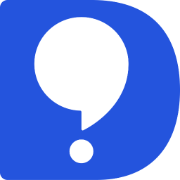Sets, Relations and Functions
In an examination, $$34\%$$ of the candidates fail in Arithmetic and $$42\%$$ in English. If $$20\%$$ fail in Arithmetic and English, the percentage of those passing in both subjects is :


Given $$A ={1,2,3}, B ={3,4}, C ={4,5,6},$$ then show that $$A\cup \left( B\cup C \right) =\{ 1,2,3,4,5,6\}$$ and $$\left( A\times B \right) \cap \left( B\times C \right) =\{ 3,4\}$$
Clearly A∪(B∪C)={1,2,3,4,5,6}
Now A×B=(1,3),(1,4),(2,3),(2,4),(3,3),(3,4)
and B× C=(3,4),(3,5),(3,6),(4,4),(4,5),(4,6)
Hence (A×B)∩(B×C)={(3,4)}.
In an examination, $$34\%$$ of the candidates fail in Arithmetic and $$42\%$$ in English. If $$20\%$$ fail in Arithmetic and English, the percentage of those passing in both subjects is :
In an examination $$80\%$$ passed in English, $$85\%$$ in Maths, $$75\%$$ in both and $$40$$ students failed in both subjects. Then the number of students appeared are
If X $$=$$ (multiples of 2), Y $$=$$ (multiples of 5), Z $$=$$ (multiples of 10), then $$X \cap ( Y \cap Z )$$ is equal to
If $$ n(\xi)=32, n(A)=20, n(B)=16 $$ and $$ n\left((A \cup B)^{\prime}\right)=4, $$ find : $$ n(A \cup B) $$
If $$ n(A-B)=12, n(B-A)=16 $$ and $$ n(A \cap B)=5, $$ find: (i) $$ n(A) $$ (ii) $$ n(B) $$ (iii) $$ n(A \cup B) $$
In a class, $$20$$ opted for Physics, $$17$$ for Maths, $$5$$ for both and $$10$$ for other subjects. The class contains how many students?
P, Q and R are three sets and $$\xi = P\cup Q\cup R$$. Given that $$n(\xi) = 60, n (P\cap Q) = 5, n(Q\cap R) = 10, n(P) = 20$$ and $$n(Q) = 23$$, find $$n(P\cup R)$$
In the Venn diagram, the numbers represent the number of elements in the subsets. Given that $$\xi = F\cup G\cup H$$ and $$n(\xi) = 42$$, find $$n(G'\cup H)$$
Given $$A ={2,3}, B = {4,5}, C ={5,6},$$ find (i) $$A\times \left( B\cap C \right) =\ .......$$ (ii) $$\left( A\times B \right) \cup \left( B\times C \right) =\ .......$$
Let $$A$$ and $$B$$ have $$3$$ and $$6$$ elements respectively. What can be the minimum number of elements in $$A\cup B$$?